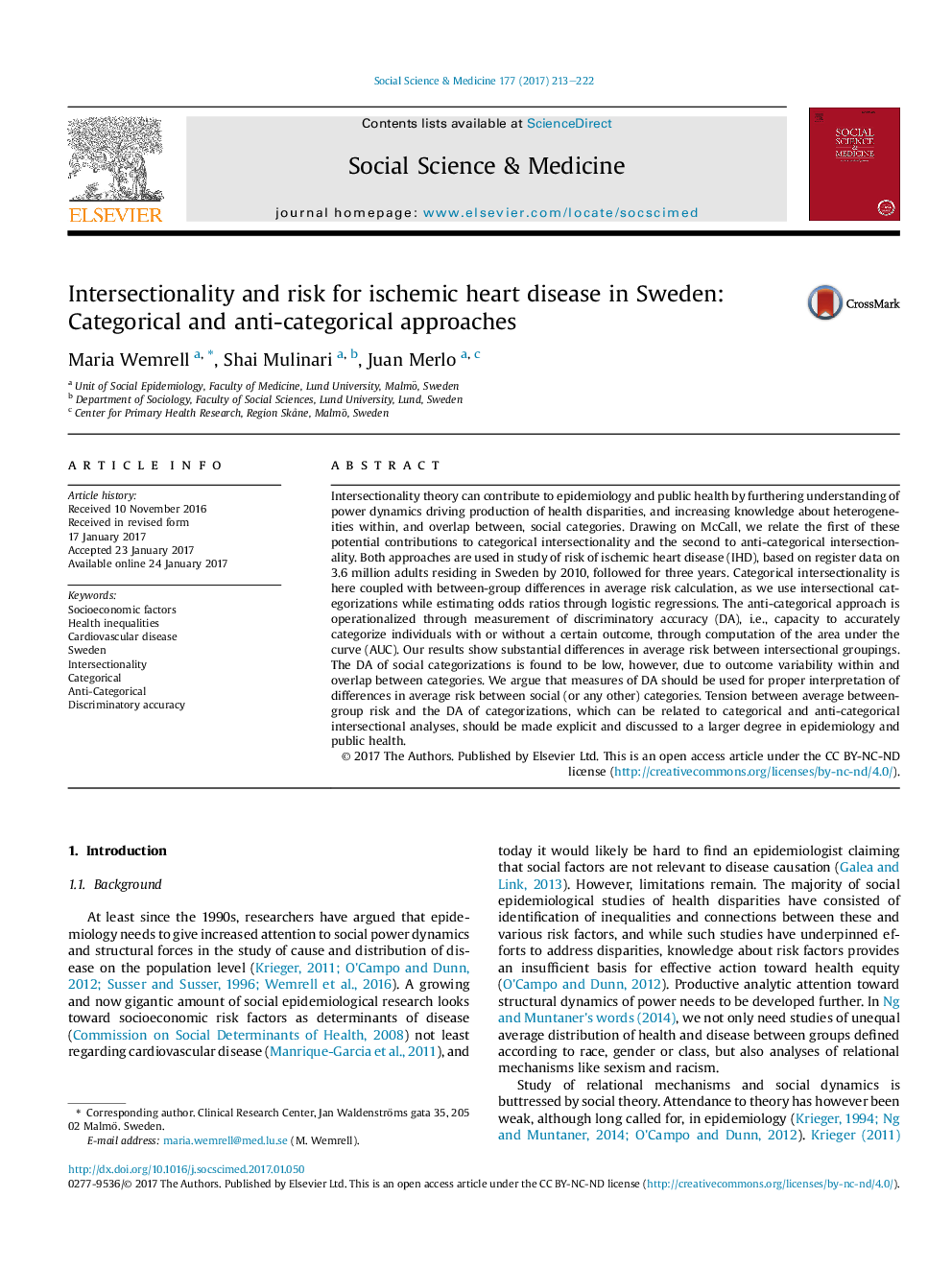| کد مقاله | کد نشریه | سال انتشار | مقاله انگلیسی | نسخه تمام متن |
|---|---|---|---|---|
| 5046728 | 1475992 | 2017 | 10 صفحه PDF | دانلود رایگان |
- Intersectionality can aid analysis of power dynamics driving health disparities.
- Intersectionality can further understanding of risk heterogeneity in epidemiology.
- Large differences in IHD risk is found between some groups in Sweden, but DA is low.
- Measurement of DA is proposed as a tool for intersectionality health research.
- Tension between average risk and DA should be further discussed in epidemiology.
Intersectionality theory can contribute to epidemiology and public health by furthering understanding of power dynamics driving production of health disparities, and increasing knowledge about heterogeneities within, and overlap between, social categories. Drawing on McCall, we relate the first of these potential contributions to categorical intersectionality and the second to anti-categorical intersectionality. Both approaches are used in study of risk of ischemic heart disease (IHD), based on register data on 3.6 million adults residing in Sweden by 2010, followed for three years. Categorical intersectionality is here coupled with between-group differences in average risk calculation, as we use intersectional categorizations while estimating odds ratios through logistic regressions. The anti-categorical approach is operationalized through measurement of discriminatory accuracy (DA), i.e., capacity to accurately categorize individuals with or without a certain outcome, through computation of the area under the curve (AUC). Our results show substantial differences in average risk between intersectional groupings. The DA of social categorizations is found to be low, however, due to outcome variability within and overlap between categories. We argue that measures of DA should be used for proper interpretation of differences in average risk between social (or any other) categories. Tension between average between-group risk and the DA of categorizations, which can be related to categorical and anti-categorical intersectional analyses, should be made explicit and discussed to a larger degree in epidemiology and public health.
Journal: Social Science & Medicine - Volume 177, March 2017, Pages 213-222
